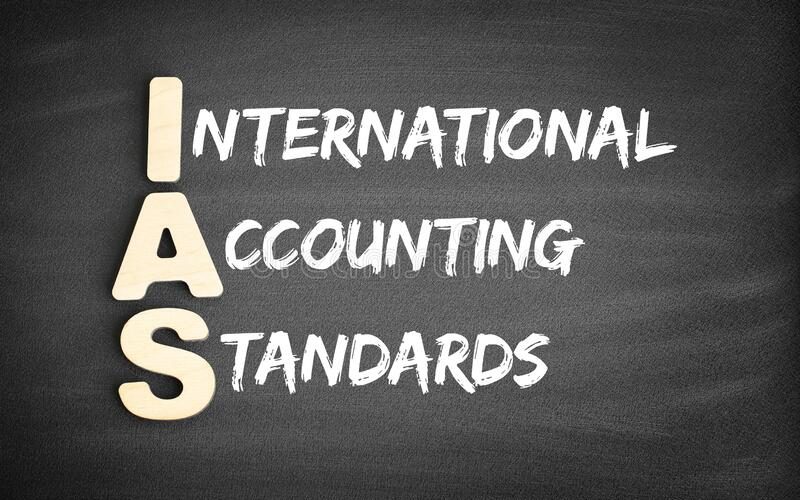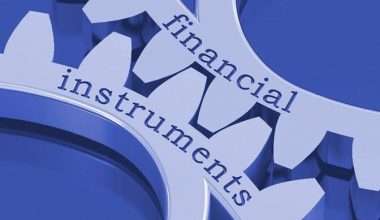What Are International Accounting Standards (IAS)?
The International Accounting Rules Board (IASB), an independent international standard-setting body based in London, issued previous accounting standards known as International Accounting Standards (IAS). In other words, these are previous accounting standards of the IASB. In 2001, however, the International Accounting Standards (IAS) were replaced by the International Financial Reporting Standards (IFRS).
Hence, when balancing accounts, international accounting is a subset of accounting that takes foreign accounting rules into consideration.
Understanding International Accounting Standards (IAS)
The International Accounting Standards Committee (IASC), which was founded in 1973, issued the first international accounting standards, known as International Accounting Standards. The purpose back then, as it is now, was to make it easier to compare firms around the world, improve financial reporting openness and confidence, and promote global trade and investment.
These accounting standards are globally comparable encourage transparency, accountability, and efficiency in financial markets all across the world. For the most part, this enhances capital allocation by allowing investors and other market participants to make informed economic judgments about investment possibilities and risks. Universal standards also help organizations with multinational operations and subsidiaries in different countries save money on reporting and regulatory compliance.
Moving Toward New Global Accounting Standards
Since the IASC was superseded by the IASB, tremendous work has been made toward producing a unified set of high-quality worldwide accounting standards. The European Union has embraced IFRS, leaving only the United States, Japan (where voluntary adoption is permitted), and China (which says it is working toward IFRS) as major capital markets without an IFRS mandate. According to several online sources, 144 governments required or permitted the use of IFRS for all or most publicly traded companies, with another 12 authorizing it, as of 2018.
The US is debating whether or not to embrace international accounting standards. The Financial Accounting Standards Board (FASB) and the International Accounting Standards Board (IASB) have been working together on a project to improve and converge the US generally accepted accounting principles (GAAP) and IFRS since 2002.
However, despite the fact that the FASB and the IASB have jointly produced standards, the convergence process is taking significantly longer than projected. This is because of the complexity of implementing the Dodd-Frank Wall Street Reform and Consumer Protection Act.
Furthermore, the Securities and Exchange Commission (SEC), which governs U.S. securities markets, has historically supported and continues to promote high-quality international accounting standards in principle. Meanwhile, because American investors and businesses consistently invest trillions of dollars abroad, a thorough understanding of the parallels and differences between US GAAP and IFRS is critical. One key distinction is that IFRS is regarded to be more principles-based, whereas GAAP is more rules-based.
Read Also: What are the Generally Accepted Accounting Principles: All You Need
Key Highlights
- The International Financial Reporting Standards replaced the International Accounting Standards (IAS) in 2001. (IFRS)
- The United States, Japan, and China are currently the only major financial markets that do not have an IFRS mandate.
- Since 2002, the American Accounting Standards Board has worked with the Financial Accounting Standards Board to strengthen and harmonize American accounting principles (GAAP) and International Financial Reporting Standards (IFRS).
List of Reporting Standards and International Accounting Standards
The IFRS Foundation has compiled a list of the International Financial Reporting Standards (IFRSs) and official interpretations. It covers accounting standards created or adopted by the International Accounting Standards Board (IASB).
All standards and interpretations are included in the list, regardless of whether or not they have been suspended.
| N° | Title | Originally issued | Effective | Fully withdrawn |
|---|---|---|---|---|
| IAS 1 | Disclosure of Accounting Policies (1975) Presentation of Financial Statements (1997) | 1975 | January 1, 1975 | |
| IAS 2 | Valuation and Presentation of Inventories in the Context of the Historical Cost System (1975) Inventories (1993) | 1976 | January 1, 1976 | |
| IAS 3 | Consolidated Financial Statements | 1976 | January 1, 1977 | January 1, 1990 |
| IAS 4 | Depreciation Accounting | 1976 | January 1, 1977 | July 1, 1999 |
| IAS 5 | Information to Be Disclosed in Financial Statements | 1976 | January 1, 1977 | July 1, 1998 |
| IAS 6 | Accounting Responses to Changing Prices | 1977 | January 1, 1978 | January 1, 1983 |
| IAS 7 | Statement of Changes in Financial Position (1977) Cash Flow Statements (1992) Statement of Cash Flows (2007) | 1977 | January 1, 1979 | |
| IAS 8 | Unusual and Prior Period Items and Changes in Accounting Policies (1978) Net Profit or Loss for the Period, Fundamental Errors and Changes in Accounting Policies (1993) Accounting Policies, Changes in Accounting Estimates and Errors (2003) | 1978 | January 1, 1979 | |
| IAS 9 | Accounting for Research and Development Activities | 1978 | January 1, 1980 | July 1, 1999 |
| IAS 10 | Contingencies and Events Occurring After the Balance Sheet Date (1978) Events After the Balance Sheet Date (1999) Events after the Reporting Period (2007) | 1978 | January 1, 1980 | |
| IAS 11 | Accounting for Construction Contracts (1979) Construction Contracts (1993) | 1979 | January 1, 1980 | |
| IAS 12 | Accounting for Taxes on Income (1979) Income Taxes (1996) | 1979 | January 1, 1981 | |
| IAS 13 | Presentation of Current Assets and Current Liabilities | 1979 | January 1, 1981 | July 1, 1998 |
| IAS 14 | Reporting Financial Information by Segment (1981) Segment reporting (1997) | 1981 | January 1, 1983 | January 1, 2009 |
| IAS 15 | Information Reflecting the Effects of Changing Prices | 1981 | January 1, 1983 | January 1, 2005 |
| IAS 16 | Accounting for Property, Plant and Equipment (1982) Property, Plant, and Equipment (1993) | 1982 | January 1, 1983 | |
| IAS 17 | Accounting for Leases (1982) Leases (1997) | 1982 | January 1, 1984 | January 1, 2019 |
| IAS 18 | Revenue Recognition (1982) Revenue (1993) | 1982 | January 1, 1984 | January 1, 2018 |
| IAS 19 | Accounting for Retirement Benefits in Financial Statements of Employers (1983) Retirement Benefit Costs (1993) Employee Benefits (1998) | 1983 | January 1, 1985 | |
| IAS 20 | Accounting for Government Grants and Disclosure of Government Assistance | 1983 | January 1, 1984 | |
| IAS 21 | Accounting for the Effects of Changes in Foreign Exchange Rates (1983) The Effects of Changes in Foreign Exchange Rates (1993) | 1983 | January 1, 1985 | |
| IAS 22 | Accounting for Business Combinations (1983) Business Combinations (1993) | 1983 | January 1, 1985 | April 1, 2004 |
| IAS 23 | Capitalization of Borrowing Costs (1984) Borrowing Costs (1993) | 1984 | January 1, 1986 | |
| IAS 24 | Related Party Disclosures | 1984 | January 1, 1986 | |
| IAS 25 | Accounting for Investments | 1986 | January 1, 1987 | January 1, 2001 |
| IAS 26 | Accounting and Reporting by Retirement Benefit Plans | 1987 | January 1, 1988 | |
| IAS 27 | Consolidated Financial Statements and Accounting for Investments in Subsidiaries (1989) Consolidated and Separate Financial Statements (2003) Separate Financial Statements (2011) | 1989 | January 1, 1990 | |
| IAS 28 | Accounting for Investments in Associates (1989) Investments in Associates & ASSOCIATES (2003) Investments in Associates and Joint Ventures (2011) | 1989 | January 1, 1990 | |
| IAS 29 | Financial Reporting in Hyperinflationary Economies | 1989 | January 1, 1990 | |
| IAS 30 | Disclosures in the Financial Statements of Banks and Similar Financial Institutions | 1990 | January 1, 1991 | January 1, 2007 |
| IAS 31 | Financial Reporting of Interests in Joint Ventures (1990) Interests in Joint Ventures (2003) | 1990 | January 1, 1992 | January 1, 2013 |
| IAS 32 | Financial Instruments: Disclosure and Presentation (1995) Financial Instruments: Presentation (2005) | 1995 | January 1, 1996 | |
| IAS 33 | Earnings per Share | 1997 | January 1, 1999 | |
| IAS 34 | Interim Financial Reporting | 1998 | January 1, 1999 | |
| IAS 35 | Discontinuing Operations | 1998 | July 1, 1999 | January 1, 2005 |
| IAS 36 | Impairment of Assets | 1998 | July 1, 1999 | |
| IAS 37 | Provisions, Contingent Liabilities, and Contingent Assets | 1998 | July 1, 1999 | |
| IAS 38 | Intangible Assets | 1998 | July 1, 1999 | |
| IAS 39 | Financial Instruments: Recognition and Measurement | 1998 | January 1, 2001 | January 1, 2018 |
| IAS 40 | Investment Property | 2000 | January 1, 2001 | |
| IAS 41 | Agriculture | 2000 | January 1, 2003 | |
| IFRS 1 | First-time Adoption of International Financial Reporting Standards | 2003 | January 1, 2004 | |
| IFRS 2 | Share-based Payment | 2004 | January 1, 2005 | |
| IFRS 3 | Business Combinations | 2004 | April 1, 2004 | |
| IFRS 4 | Insurance Contracts | 2004 | January 1, 2005 | January 1, 2021 |
| IFRS 5 | Non-current Assets Held for Sale and Discontinued Operations | 2004 | January 1, 2005 | |
| IFRS 6 | Exploration for and Evaluation of Mineral Resources | 2004 | January 1, 2006 | |
| IFRS 7 | Financial Instruments: Disclosures | 2005 | January 1, 2007 | |
| IFRS 8 | Operating Segments | 2006 | January 1, 2009 | |
| IFRS 9 | Financial Instruments | 2009 (updated 2014) | January 1, 2018 | |
| IFRS 10 | Consolidated Financial Statements | 2011 | January 1, 2013 | |
| IFRS 11 | Joint Arrangements | 2011 | January 1, 2013 | |
| IFRS 12 | Disclosure of Interests in Other Entities | 2011 | January 1, 2013 | |
| IFRS 13 | Fair Value Measurement | 2011 | January 1, 2013 | |
| IFRS 14 | Regulatory Deferral Accounts | 2014 | January 1, 2016 | |
| IFRS 15 | Revenue from Contracts with Customers | 2014 | January 1, 2018 | |
| IFRS 16 | Leases | 2016 | January 1, 2019 | |
| IFRS 17 | Insurance contracts | 2017 | January 1, 2021 |
What Is the Accounting Principle IAS?
The accounting principle IAS are globally comparable standards that encourage transparency, accountability, and efficiency in financial markets all across the world. For the most part, they enhance capital allocation by allowing investors and other market participants to make informed economic judgments about investment possibilities and risks.
How Many IAS Standards Are There?
Including those that have been superseded by the IFRS, there are 41 IASs altogether as of 2021.
What Is Difference Between GAAP and IFRS?
- GAAP stands for “Generally Accepted Accounting Principles.” These are the rules that most people in the U.S. agree on when it comes to financial reporting.
- IFRS stands for “International Financial Reporting Standards.” These are a set of accounting rules that most countries around the world agree on and use.
What Are the 4 Financial Statements of IFRS?
A complete set of financial statements must include a statement of financial position, a statement of profit or loss and other comprehensive income, a statement of changes in equity, and a statement of cash flows, according to the standard.
Related Articles
- IFRS (International Financial Reporting Standards) List, Requirements, Compliance & Benefits
- GAAP vs IFRS: Revenue Recognition, Balance Sheet & Other Differences
- GAAP: Overview, Importance, History, Limitations
- IFRS Accounting Explained!!! (+ 2023 Trends and Techniques)
- Accounting Standards: Overview, Benefits & Codification






